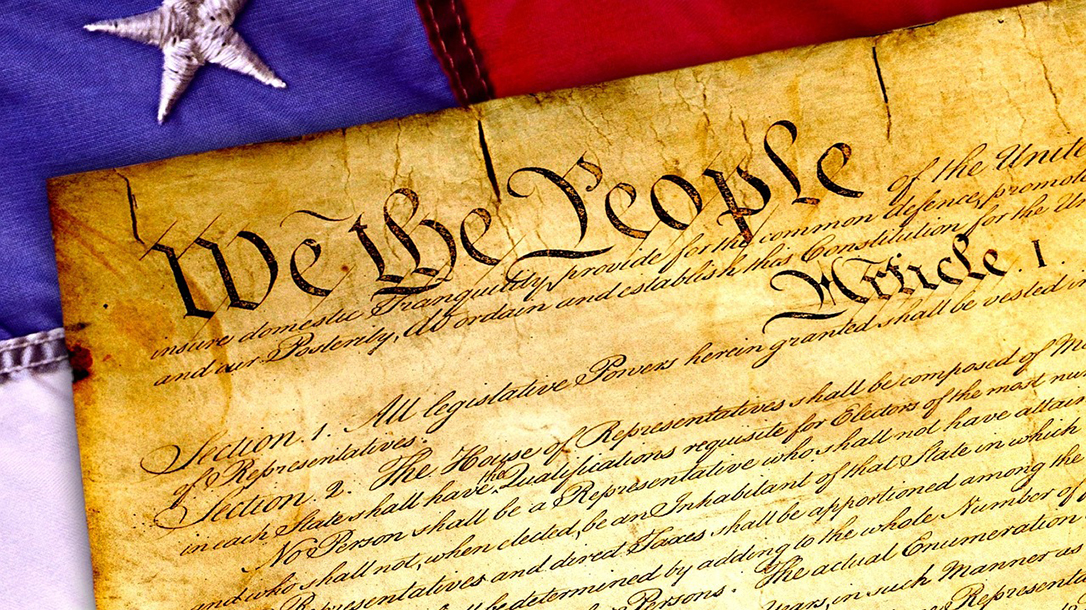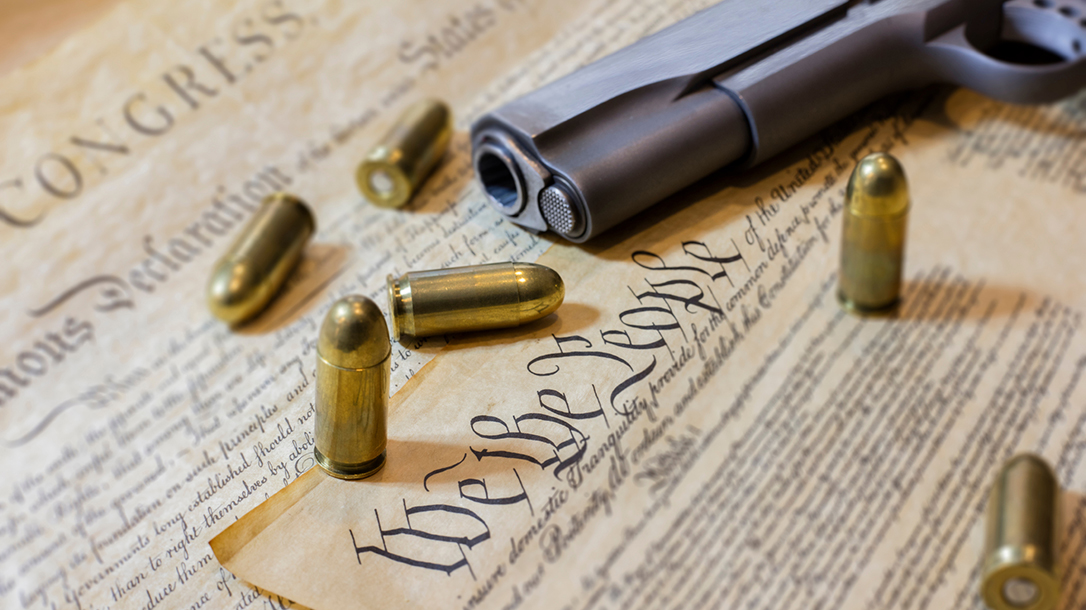The Second Amendment contained within the U.S. Bill of Rights states: “A well regulated Militia, being necessary to the security of a free State, the right of the people to keep and bear Arms, shall not be infringed.” Understanding the verbiage of the day, along with constitutional law and modern precedent, goes a long way in understanding your Second Amendment rights.
Understanding Your Second Amendment Rights
Poor comma placement aside, the simple text of this constitutional protection seems fairly straight forward. The term “right of the people” isn’t all that confusing, and the term “shall not be infringed” seems pretty unambiguous.
However, what constitutes “infringing” on this “right of the people to keep and bear Arms” has been roundly cussed and discussed for the past half century, and even before that. Before digging in a little deeper, let’s consider a few salient points.
Advertisement — Continue Reading Below
A Well Regulated Militia …
The common argument (although not as common nowadays) that the term “well regulated Militia” means that this is a right reserved only for those serving in a state militia is a relatively new one, no matter what anti-gun advocates want you to believe. In U.S. v. Cruikshank (1876), Presser v. Illinois (1886), Miller v. Texas (1894) and U.S. v. Miller (1939), the U.S. Supreme Court recognized that the Second Amendment protects an individual right to arms, and the high court has never taken a different view.
The Kansas Supreme Court invented the idea that the amendment instead protected a “right” of a person to keep and bear arms only while serving in a state militia in the 1905 case Salina v. Blaksley. Later, in the 1942 case U.S. v. Tot, the U.S. Court of Appeals for the Third Circuit advanced the idea that the amendment protects the “right” of a state to have a militia.
Protecting an Individual Right to Arms
In 2008, however, the U.S. Supreme Court heard its first case centered specifically on whether the Second Amendment protects an individual right to arms. In that case, District of Columbia v. Heller, the court ruled that the amendment protects an individual right to keep arms and to bear arms “in case of confrontation,” without regard to a person’s relationship to a militia.
Advertisement — Continue Reading Below
In another important Supreme Court case, McDonald v. Chicago in 2010, the court found that individual right as protected by the Second Amendment extends throughout the entire nation, regardless of where one might live. And in a more recent case, New York State Rifle & Pistol Association v. Bruen, which was decided in 2022, the court ruled that the individual right to arms applies to bearing arms outside the home.
While all those court cases might sound overwhelming, the gist is that the Second Amendment protects your right to purchase, own and carry firearms. And while different states might try to pass various laws making your practice of that right more difficult, if the laws violate that right they will eventually be found unconstitutional in the courtroom.

Advertisement — Continue Reading Below
Fear Factor
One fear of some “seasoned” gun owners, many of whom have become understandably cynical because of the constant proposed infringements on gun owner rights over the past several decades, is that new gun owners won’t be interested in the Second Amendment and the freedoms it protects. Fortunately, that doesn’t seem to be the case based on recent research.
A 2022 survey from the National Opinion Research Center (NORC) at the University of Chicago not only found that new gun owners were largely young and educated, but their thoughts on the right to keep and bear arms aren’t much different than those of longtime gun owners.
“We found that their views align really well with other gun owners even though demographically they’re so different,” said NORC senior fellow John Roman.
Advertisement — Continue Reading Below
Blowing Up the Anti-Gun Narrative
According to a report on that study by the National Shooting Sports Foundation (NSSF), the explanation for that could be quite simple—law-abiding Americans are not falling for anti-gun narrative anymore.
“The study showed almost every gun control talking point crumbled in the past two years, while gun owners increased,” the NSSF report stated. “The data suggests that this population of consumers, the first-time gun buyers, are vastly aware of the misleading rhetoric, as reflected in more of NORC’s findings. A clear majority of first-time gun buyers, nearly 70%, believe concealed carry should be expanded. This majority also wants to shorten unconstitutional waiting periods to legally buy a gun and also supports qualified teachers being able to carry a concealed firearm in order to protect their students.”
In the end, there is a much larger discussion that we could get into on the ins and outs of the Second Amendment. But one thing’s for certain: Unless you are a prohibited person because of a past felony, a current drug addiction or a few other disqualifiers, you can proudly practice your right to keep and bear arms as protected by the Second Amendment!
Advertisement — Continue Reading Below
In our next installment of Shooting 101, we’ll explore different kinds of guns and what roles they best fill for lawful gun owners.
























